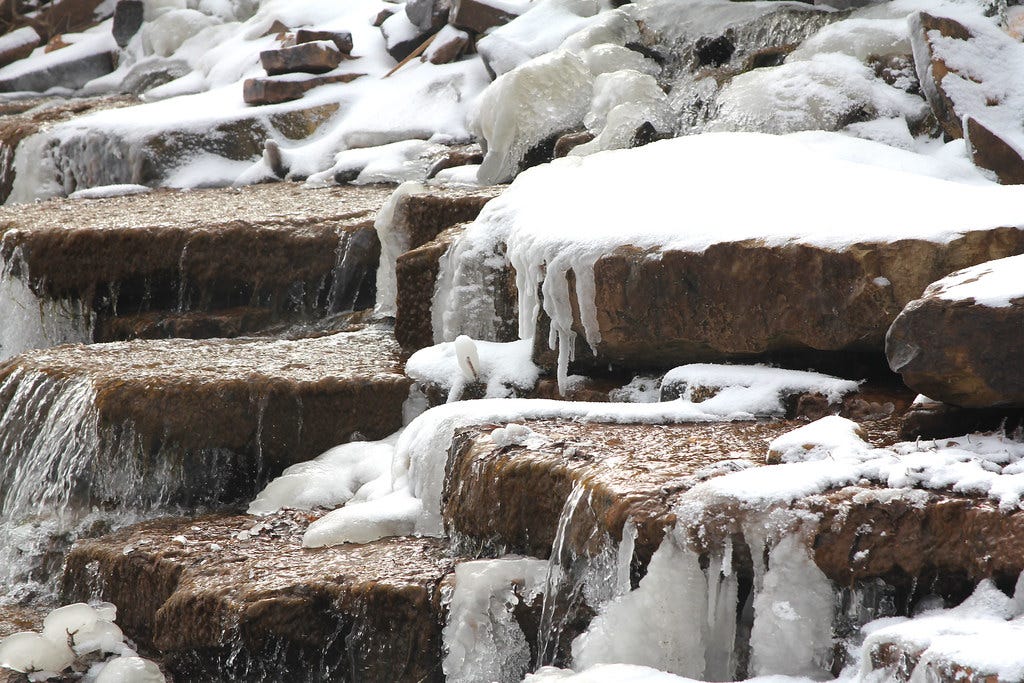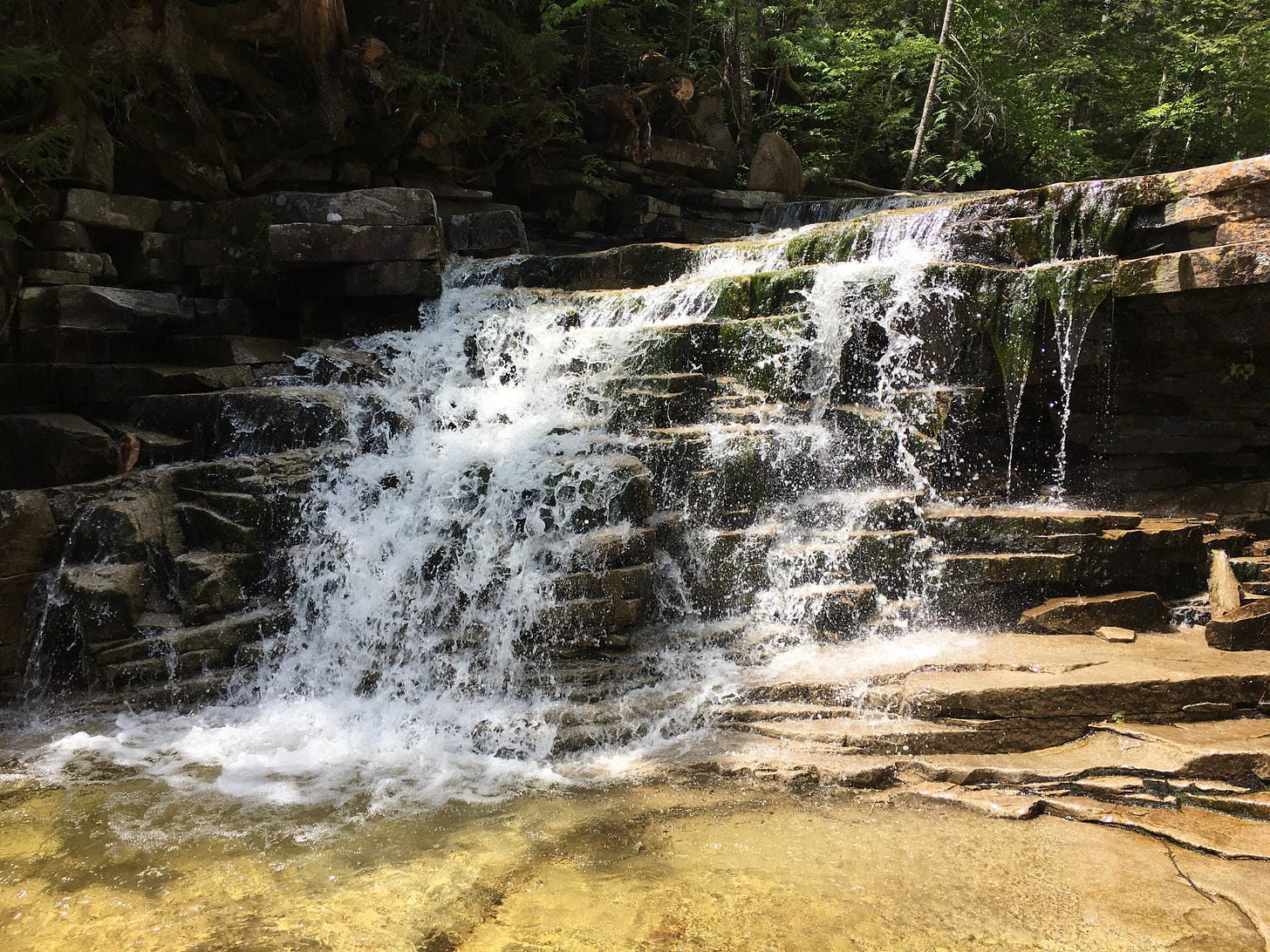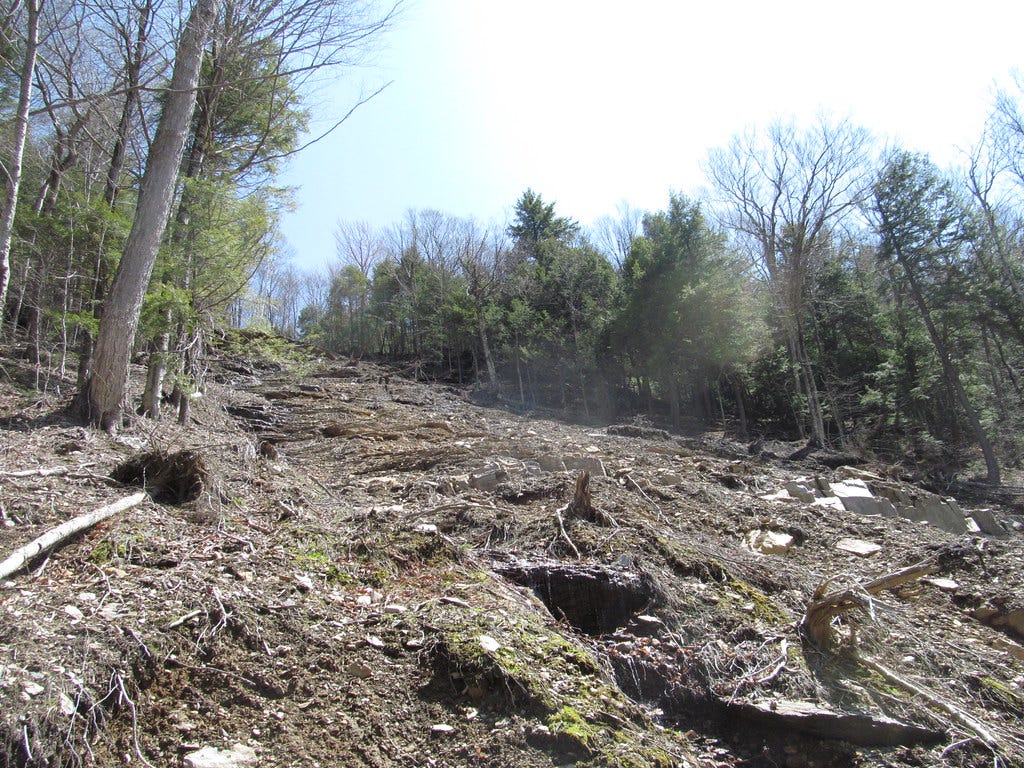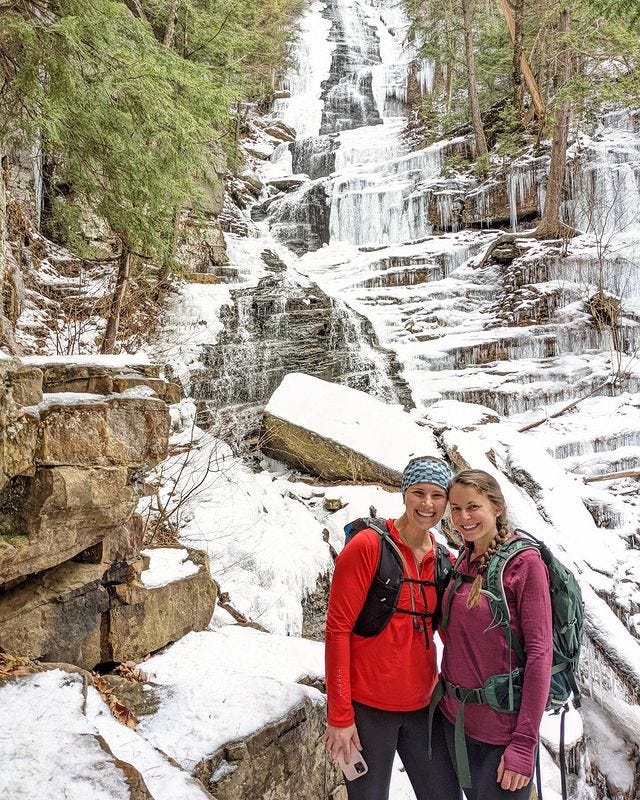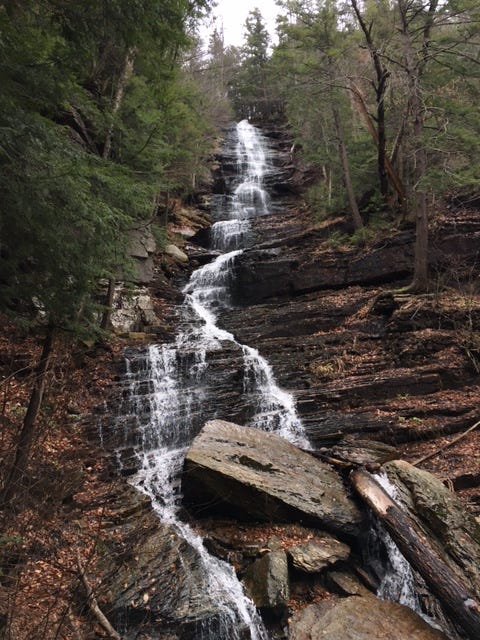If you’ve never stood at the base of a frozen New England waterfall before, you should change that this year. As I wrote last winter, frozen cascades often resemble wintery kaiju (gigantic monsters), and when you detect the faint rush of water beneath all that ice, it’s hard to shake the eerie sensation that you’re standing before a slumbering behemoth that will stir awake from dormancy one day. You don’t necessarily have to strap on traction devices or snowshoes and go for a winter hike to see a frozen waterfall: one of my favorites—Moss Glen Falls of Granville, Vermont—is a roadside attraction.
But waterfalls come in diverse shapes, and this means that every frozen cascade resembles a unique creature or object. And in the hills of Manchester, Vermont—a gateway to Green Mountain skiing destinations like Stratton and Bromley—there’s a gorgeous 125-foot cascade that transforms into something from a polar legend when it freezes solid. Imagine a lost city encased in ice, carved into a mountainside and boasting hundreds of little buildings swallowed by frozen waters, and you’ll have a pretty clear idea of what Lye Brook Falls looks like in the middle of Vermont winter.
The reason why Lye Brook Falls takes on the heft and shape of a multi-level city is largely thanks to the unique shape of the local granite. While lots of cascades spill down smoother slabs of stone, or jumbles of rocks, the foundation of Lye Brook Falls is essentially a natural stone stairway. In the summer or fall, you can see hundreds of little stone steps carved in the rock, and the waters of Lye Brook explode down this grand staircase as though they were auditioning for the final 30 minutes of Titanic.
While the stair patterns might appear to be the result of human activity like quarrying, they are the byproduct of centuries-old glacial activity in the Green Mountains. There are other waterfalls in New England where you can find similar stair patterns carved into the rock. One of them is New Hampshire’s Bemis Brook Falls, which is accessed by a short cutoff path (the Bemis Brook Trail) along the hike to Arethusa Falls. A pithy little gem compared to the eye-popping grandeur of Lye Brook Falls, the winterized version of this cascade might resemble half of a model coliseum, encased in ice.
But Lye Brook Falls is bigger in every way, including the hike itself. The Lye Brook Falls Trail follows an old railroad bed through the mixed woodlands of the Lye Brook Wilderness Area. At 2.4 miles each way, it’s a gentle, slow-burn climb along which you’ll gain a respectable 944 vertical feet. The many streams that slosh across the trail will be frozen or covered in snow around this time, but the likely presence of ice (especially once you start to get closer to the waterfall) is good cause for stuffing a pair of micro-spikes into your backpack. As the trees become more evergreen and partial views of the valley open up behind you, the trail reaches a junction and veers right for the final push to Lye Brook Falls. And here, as the trail ambles at a mostly level grade across a strikingly steep slope, you’ll get another vivid glimpse of how grand scale natural events can dramatically re-shape the haunches of a mountain.
Most Vermonters can probably tell you where they were sheltering when Hurricane Irene ripped across the state on August 28th, 2011. Nearly 8 inches of rain water accumulated on the ground, and the resultant floods pulverized houses, barns, bridges, roads, and crops. The landscape itself took a beating as well, and the worst damage was concentrated in Southern Vermont. As you approach Lye Brook Falls, you’ll pass through several exposed areas where mudslides razed entire swaths of forests, as though the trees were toothpicks. With snow on the ground, you won’t be able to see the hundreds of exposed tree roots and loose rocks in these slide zones. When blanketed by snow, these barren areas almost resemble man-made ski slopes: another instance in which the impact of natural events and snow or ice can create the illusion of something man-made in the wild. And the falls are waiting, just up ahead…
There are a couple of different viewing points for Lye Brook Falls and you’ll want to strap on your micro-spikes for each of them (there’s a brief descent toward the falls.) Maybe you’ll disagree with my characterization of the falls as a city of ice and see something else in their unusual shape: a Godzilla-sized wedding veil, the striated bellies of humpback whales, or a frosted cake that you’ll spend the rest of the day hunting for at various Vermont bakeries. Whatever Lye Brook Falls means to you in the winter, it’s a sumptuous example of how winter waterfalls can become canvases for our imaginations during the most punishing and austere season of the year.
Lye Brook Falls via the Lye Brook Falls Trail
Hike distance: 4.8 miles out-and-back
Elevation gain: 944 feet
CLICK HERE for a trail map
I regret to announce that this week’s Mosscast will not be happening due to my voice still recovering from a mostly short-lived cold. Isn’t it weird how you can feel 90% recuperated from a rhinovirus in 24-48 hours, but your new Tom Waits voice can last for a week? While I was tempted to record a podcast episode with that new voice, it seemed slightly wiser to allow my vocal cords to fully recover before using them in such a robust and prolonged manner. I should be back to normal by the weekend.
But I do have some very cool personal news to share. The Walking City Trail is going to get an official Boston City Council hearing to explore the possibility of installing permanent signs along the urban hiking route! This is largely thanks to the advocacy and organizing prowess of Councilor Kendra Lara, with whom I co-hosted a bunch of guided hikes along the WCT last fall, and also thanks to hundreds of Boston residents and visitors who’ve hiked the trail and spread the word. Thanks to all of you, we’re now in a very different place than where I assumed we would be when I launched the trail last June. The hearing will be happening on March 2nd and if you’d like to get updates about how you can help make the signage project happen, I recommend signing up for the Walking City Trail newsletter by moseying over to the official trail website.

While we’re on the subject of winter hiking, I highly recommend reading this recent Boston Globe Magazine story by Kevin Koczwara. It’s a deep dive into the troubling reality that a lot of hikers have died in the White Mountains, with a particularly grim death toll in the last few months. Koczwara’s story opens the door to conversations about measures like increased permitting requirements for certain tough hikes, or having rangers onsite in more places to vet hikers’ plans and readiness before they set off on arduous trails. But not all hiker fatalities are due to lack of preparedness and inexperience. And that might be the most uncomfortable truth of them all.


